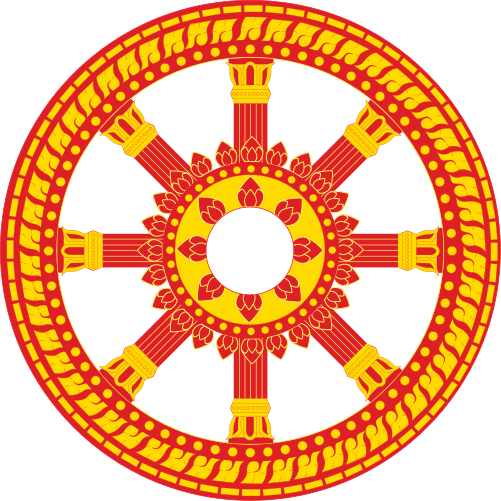
”Dhamma is good. And what is Dhamma? It is having few faults and many good deeds, mercy, charity, truthfulness, and purity”. – by Ashoka the Great (Second Pillar Edict)
Dhamma : As evident from the above excerpt from his Pillar edict, Ashoka’s idea of Dhamma was not about a religion or religious belief system. By Dhamma, he meant an ethical or moral code of conduct capable of universal application and acceptance by the people irrespective of their personal belief. As widely believed, Ashoka’s Dhamma is NOT the same as Lord Buddha’s teachings.
Even a bird’s eye view of Ashoka’s wrtings on stones gives an impression that his idea of Dhamma is the ultimate fountainhead of modern day democratic values of equality, respect for diversity, tolerance and justice and the welfare state.
He took keen efforts towards propagation of his Dhamma, (that is, the code of ethical principles and humanitarian ideals of universal dimension) in his empire.
Following the Third Buddhist council held in about 250 BCE at Asokarama in Patliputra under his patronage, Emperor Ashoka sent out Missionaries across length and breadth of his empire to spread his Dhamma.
| Name of Missionary | Region visited |
| Majjhantika or Madhyantika (Buddhist monk born in Varanasi, UP) | Kashmir and Gandhara |
| Mahadeva | Mahismandala (Mysore) |
| Rakkhita (born in a noble Sākyan family, Rakkhita Thera was an arahant). | Vanavasi (Northern Kanara, South India) |
| Yona Dhammarakkhita | Aparantaka (Gujarat and Sindh) |
| Mahadhammarakkhita | Maharattha (Maharashtra) |
| Maharakkhita (probably he was a Greek) | Yona (Greece) |
| Majjhima (Majjhima was an Arahant. After the Third Council, he embarked on mission to Himalayan region along with Kassapagotta, Durabhissara, Sahadeva, and Mūlakadeva). | Himavanta (Himalayan Region) |
| Sona and Uttara (both were nuns). | Suvarnabhumi (Myanmar/Thailand) |
| Mahindra and Sanghamitra (the son and the eldest daughter of Emperor Ashoka and his first wife, Devi. The two siblings became Buddhist monks) | Sri Lanka |
ASHOKA’S DHARMA CHAKRA “the wheel of Righteousness” (Dharma in Sanskrit or Dhamma in Pali)

24 spokes in Ashok Chakra depicts one of the 24 virtues
| Love | Courage | Patience | |
| Peacefulness | Kindness | Goodness | |
| Faithfulness | Gentleness | Self Control | |
| Selflessness | Self Sacrifice | Truthfulness | |
| Righteousness | Justice | Compassion | |
| Graciousness | Humility | Empathy | |
| Sympathy | Knowledge | Wisdom | |
| Pride | Confidence | Hope |
IDEOLOGY OF ASHOKA THE GREAT:
History of Ancient India: Ashoka’s Dhamma
***
